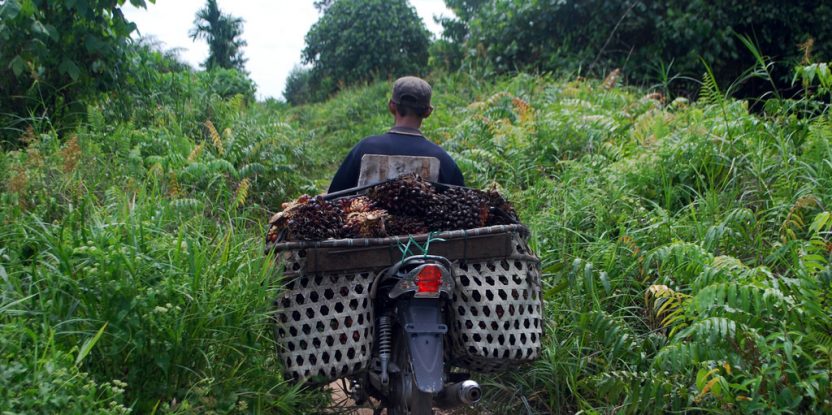
Director of the Tropical Forest Alliance 2020, Marco Albani, speaks on the sidelines of the Global Landscapes Forum: The Investment Case, held on 6 June 2016 in London.
Today there’s about $500 billion of forestry commodities produced every year. About $200 billion of those are in tropical rainforest countries. So transforming those commodities to deforestation-free commodities is actually a big transformation. There’s a role for the private sector in that.
Why establish the Tropical Forest Alliance 2020?
TFA 2020 was created to respond to basically commitments made by the Consumer Goods Forum, which is about 400 large companies involved in consumer goods. So retailers and producers of consumer goods. They made commitments responding to the identification of supply chain commodities as big drivers of deforestation.
To basically get rid of deforestation in four key commodities, so-called forestry commodities: palm oil, beef, soy, and paper and pulp.
Who are the stakeholders involved?
There is a need for government at all levels to work with civil society, to work with the private sector, to move towards the transformation of how rural development is done, how the commodities are produced, and how they’re grown.
This is not something that the private sector can do alone. It’s not something that government can do alone. And it’s not something that civil society can do alone. Basically, there is a need for not only breaking the silence, but creating models of public-private collaboration. Potentially public-private partnerships even, but let’s just stick to collaboration, interaction. And creating a shared vision that gets behind a different model of rural development. Because that’s really what we’re talking about.
What global developments are setting the agenda?
Last year we had, I think, three very big outcomes. Three very important meetings that brought very important outcomes. One was the meeting on development finance in Addis Ababa. Then we had the signing of the Sustainable Development Goals, and then of course we had the Paris Agreement.
The Paris Agreement brought forward, I think, the aspiration of staying well below 2 degrees, 1.5 degrees, put forests in the text of the Agreement. And if you backtrack what needs to happen to actually stay below 1.5 degrees or have a reasonable chance to stay below 2 degrees, there’s no way we can do that without a land-use sector that becomes climate-positive. So that’s very important.
But I think that the SDGs, the Sustainable Development Goals, are possibly even more important. Because, in the end, of the various wedges that we have in the climate policy arena, the land-use one is the one that probably has the biggest implications for the other Sustainable Development Goals.
What is the role for forests?
I think that this is about integrated land-use planning. Forests have a big role. Interestingly, some of the recent data from Indonesia about the drivers of deforestation show logging has been one of the biggest drivers – and actually higher than palm oil.
But we need to put it in the context of rural development and land-use planning. There is a big role for forests, for the correct management of forests, and for forest conservation – which are not the same thing, right? To play a role in the landscape, to achieve what is a landscape-level sustainable development pathway.
Are you optimistic about the future of supply chains?
Yes. I think that we have two very strong trends that will support the transformation of supply chains. One is the increased transparency of what happens in the forests and what happens in the rural environment. I think that’s truly transformational. We will be able to trace back deforestation and allocate it to specific supply chains in a way that we’ve never been able to do before. When I started working in this space, it was impossible even to know exactly how much deforestation there was, let alone where it was.
Today we have basically almost instant information on major forest canopy losses. We haven’t quite processed what that means. And we’re still trying to figure out how we use that kind of information, but I think that will be quite transformational.
We want you to share Forests News content, which is licensed under Creative Commons Attribution-NonCommercial-ShareAlike 4.0 International (CC BY-NC-SA 4.0). This means you are free to redistribute our material for non-commercial purposes. All we ask is that you give Forests News appropriate credit and link to the original Forests News content, indicate if changes were made, and distribute your contributions under the same Creative Commons license. You must notify Forests News if you repost, reprint or reuse our materials by contacting forestsnews@cifor-icraf.org.